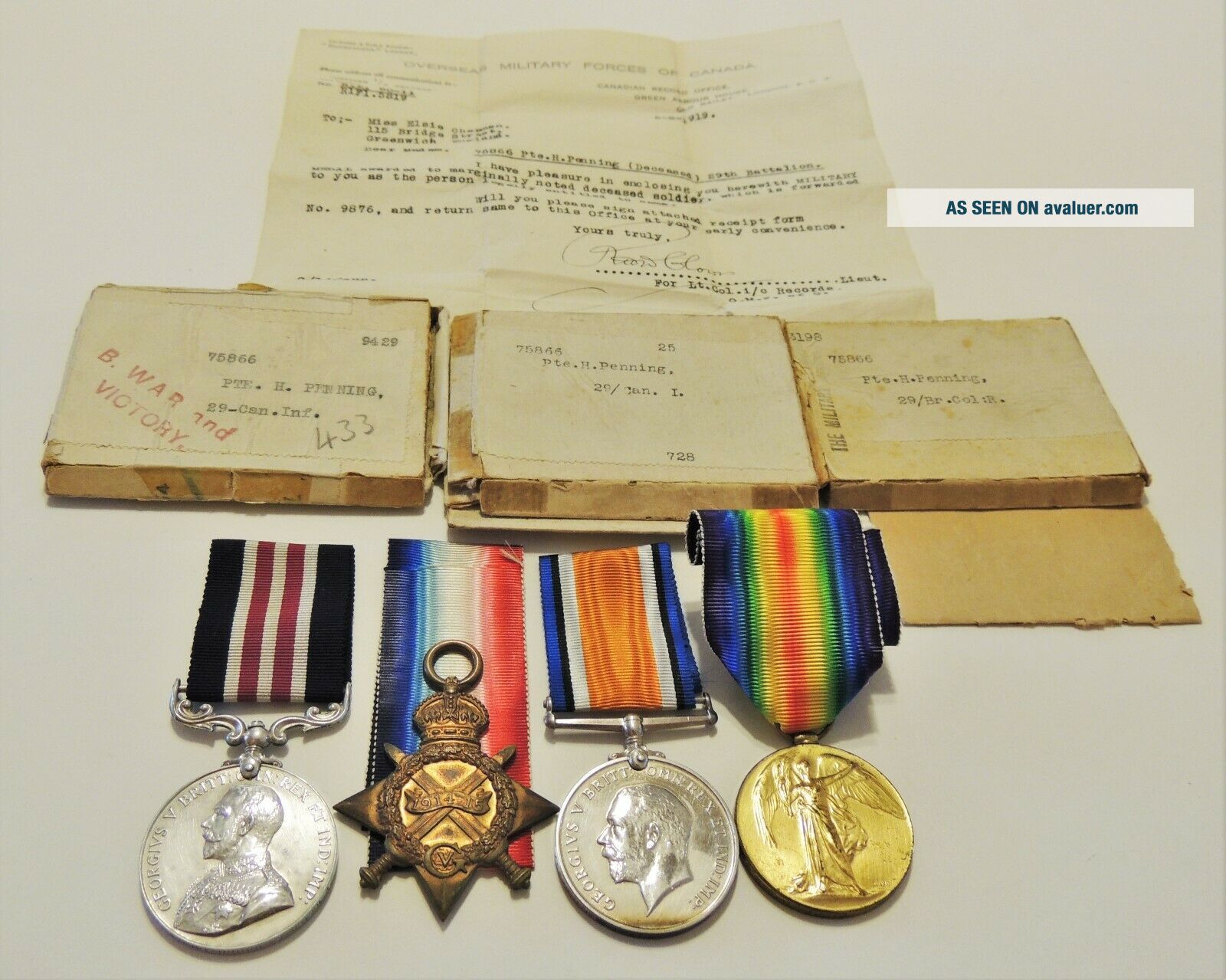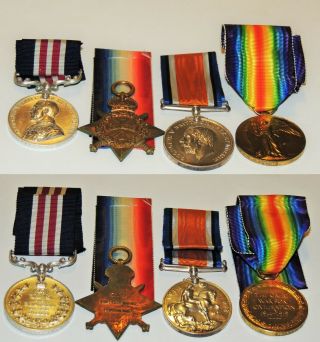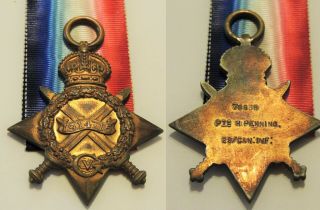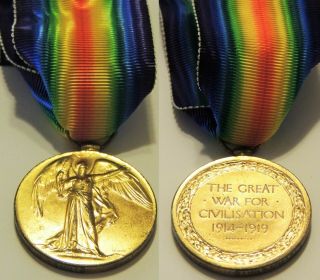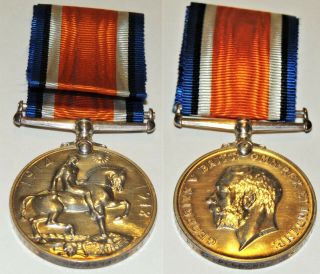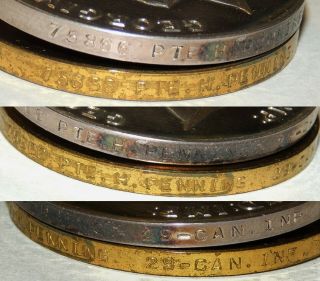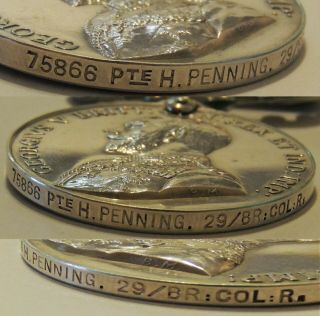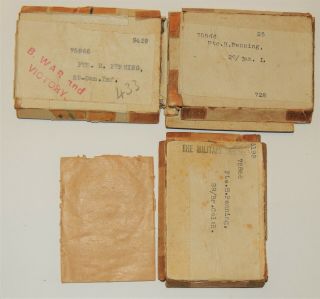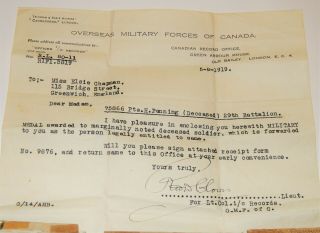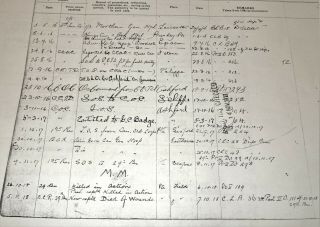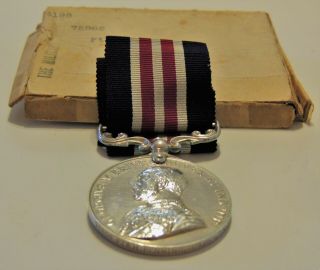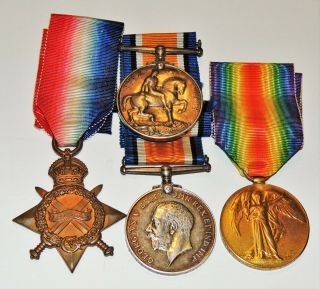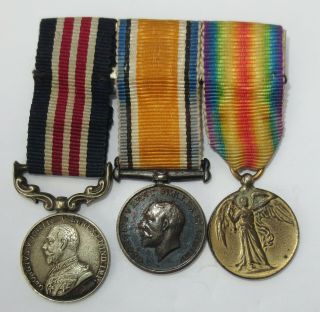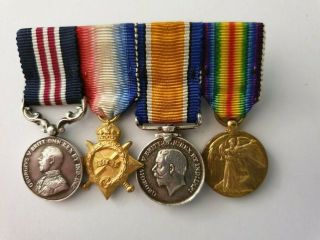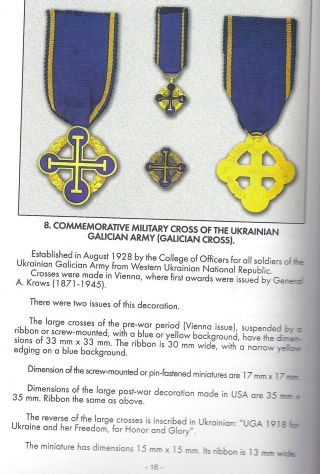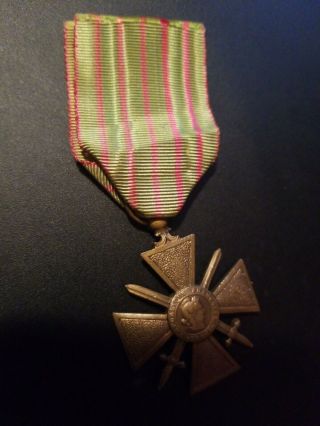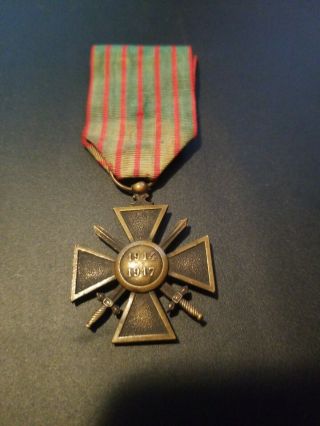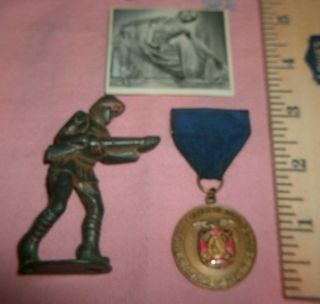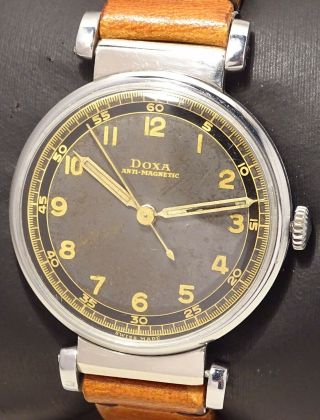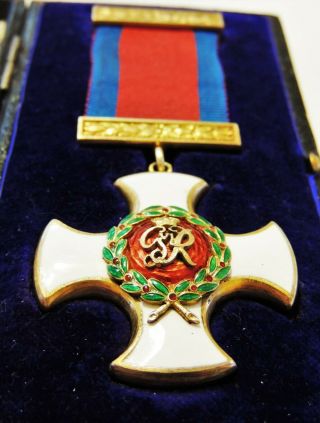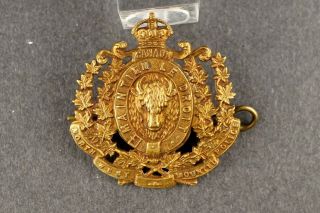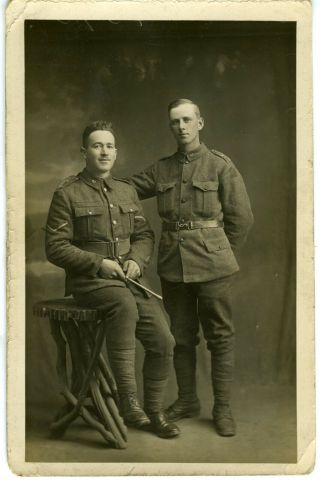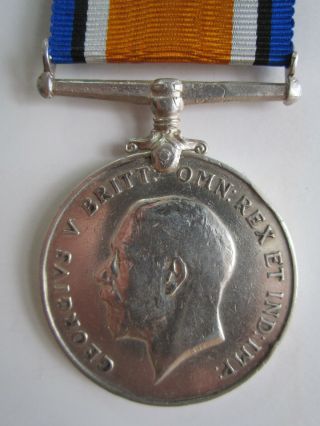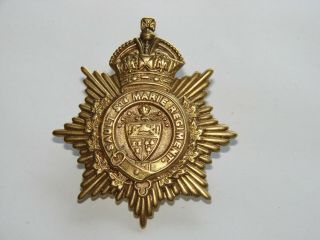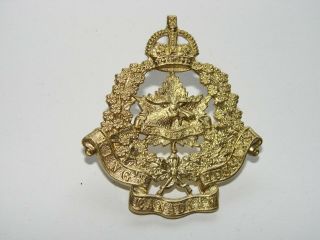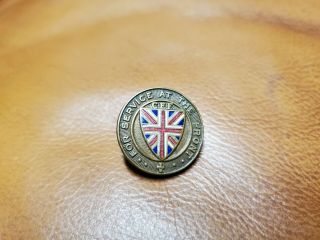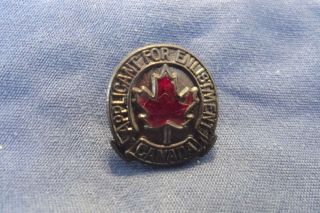RARE Military Medal MM Canada WW1 29th CEF Vancouver KIA Victory War 14 - 15 Star
Item History & Price
| Reference Number: Avaluer:127043 |
Up for auction is an original WW1 29th C.E.F. (Vancouver) KIA Killed in Action medal trio and Military Medal MM Decoration to Harry Penning, in excellent condition with original boxes and document...s. All medals are in good original condition, with original worn ribbons. The 1914/1915 star has a nice aged patina, with sharp detailing on the front. Reverse is correctly impressed: "75866 PTE H.PENNING. 29/CAN:INF:". His Victory Medal and War medal are also in good condition with beautiful aged patinas, correctly impressed on each rim: "75866 PTE H.PENNING. 29-CAN.INF.".
Harry Penning's MM is in excellent condition, with sharp detailing on the front and reverse. George V is clearly depicted in high detail on one side, with the George V Royal cypher on the other side- this reads "For Bravery in the Field". His military medal is correctly impressed:
"75866 PTE H. PENNING. 29/BR:COL:R."
This grouping includes many pages of copied research, detailing his attestation, casualty form, active service document, and service record with remarks. Surprisingly, his original Overseas Military Forces of Canada Military Medal award document survived intact, and is included in this grouping! (please see photos). Issued to a relative in England, this tragic notice was sent on 5-8-1919 accompanying his Military Medal award. The group also includes his named and numbered original WW1 medal issue Victory/War Medal box, his 1914/1915 Star Medal box and his Military Medal MM box with original paper packet! These are rarely seen at all, let alone with the original group.
Born on June 12 1888, he was originally a Miner from Vernon British Columbia (Okanagan Valley). He enlisted in Vancouver on November 9th 1914.
Harry Penning was previously gassed in October 1917. Interestingly, he appears to have been a WW1 Tunneller for some time in the 3rd Canadian Tunnelling Company! Tragically he was killed by a shell blast October 2nd 1918, and recorded on the 10th of October 1918. (information can be found on page 597 of the C.E.F. Roll of Honor book, where he is listed as PENNING MM, 29th CEF)No Memorial Cross was issued, although a plaque and scroll were given to his father.
A seldom seen Military Medal Decoration and Trio to a KIA in two famous Regiments (29th C.E.F. and 3rd Can Tunnelling Company), this would be an excellent centrepiece in a British Columbia/Vancouver medal collection. As well as this, it would be an interesting research project on a WW1 Canadian soldier, and would go well in any medal collection. Please see my other auction for another 29th C.E.F. KIA trio grouping.
Some History on the 29th C.E.F. (Vancouver)
The 29th Battalion (Vancouver), CEF was an infantry battalion of the Canadian Expeditionary Force during the Great War. Known as "Tobin's Tigers", the battalion was authorized on 7 November 1914 and embarked for Britain on 20 May 1915. It disembarked in France on 17 September 1915, where it fought as part of the 6th Infantry Brigade, 2nd Canadian Division in France and Flanders until the end of the war. The battalion was disbanded on 30 August 1920.
The distinguishing patch of the 29th Battalion (Vancouver), CEF.
The 29th Battalion recruited in Vancouver and New Westminster, British Columbia and was mobilized at Vancouver.
The 29th Battalion had eight Commanding Officers:
Lt.-Col. H.S. Tobin, 20 May 1915 – 20 July 1916
Lt.-Col. J.S. Tait, 20 August 1916 – 10 September 1916
Lt.-Col. J.M. Ross, 10 September 1916 – 16 December 1916
Lt.-Col. J.S. Tait, 16 December 1916 – 22 January 1917
Lt.-Col. J.M. Ross, DSO, 22 January 1917 – 23 July 1917
Lt.-Col. W.S. Latta, DSO, 23 July 1917 – 16 August 1918
Maj. L.A. Wilmot, MC, 16 August 1918 – 5 September 1918
Lt.-Col. H.S. Tobin, DSO, 5 September 1918-Demobilization
One member of the 29th Battalion, Company Sergeant-Major (Warrant Officer Class II) Robert Hill Hanna was awarded the Victoria Cross for his actions on August 21, 1917, at Hill 70 near Lens, France.
The 29th Battalion was awarded the following battle honours:
MOUNT SORREL
SOMME, 1916, '18
Flers-Courcelette
Thiepval
Ancre Heights
ARRAS, 1917, '18
Vimy, 1917
Scarpe, 1917, '18
HILL 70
Ypres 1917
Passchendaele
AMIENS
HINDENBURG LINE
Drocourt-Quéant
Canal du Nord
Cambrai, 1918
PURSUIT TO MONS
FRANCE AND FLANDERS, 1915–18
Raised by Lieutenant-Colonel Tobin on 24 October 1914 in Vancouver, British Columbia, the 29th derived its manpower from the Duke of Connaught's Own Rifles and the Irish Fusiliers of Canada. The SS Missanabie transported the battalion to England in May 1915. Subordinated to the 6th Brigade, 2nd Canadian Division, the 29th consisted of 37 officers and 1, 104 other ranks.
The 29 Battalion's lineage was perpetuated by the 2nd Battalion, British Columbia Regiment – constituted in 1920.Subsequent amalgamation in 1936 absorbed the 29th's history into that of the Irish Fusiliers of Canada (The Vancouver Regiment), which was placed on the Supplementary Order of Battle in 1965. On 13 June 2002, The Irish Fusiliers of Canada (The Vancouver Regiment) was amalgamated with The British Columbia Regiment (Duke of Connaught's Own).
The 29th Battalion is currently perpetuated by The British Columbia Regiment (Duke of Connaught's Own).
Some History on the 3rd Canadian Tunnelling Company:
The 3rd Canadian Tunnelling Company was one of the tunnelling companies of the Canadian Military Engineers during World War I. The tunnelling units were occupied in offensive and defensive mining involving the placing and maintaining of mines under enemy lines, as well as other underground work such as the construction of deep dugouts for troop accommodation, the digging of subways, saps (a narrow trench dug to approach enemy trenches), cable trenches and underground chambers for signals and medical servicesBy January 1915 it had become evident to the BEF at the Western Front that the Germans were mining to a planned system. As the British had failed to develop suitable counter-tactics or underground listening devices before the war, field marshals French and Kitchener agreed to investigate the suitability of forming British mining units. Following consultations between the Engineer-in-Chief of the BEF, Brigadier George Fowke, and the mining specialist John Norton-Griffiths, the War Office formally approved the tunnelling company scheme on 19 February 1915.
Norton-Griffiths ensured that tunnelling companies numbers 170 to 177 were ready for deployment in mid-February 1915. In the spring of that year, there was constant underground fighting in the Ypres Salient at Hooge, Hill 60, Railway Wood, Sanctuary Wood, St Eloi and The Bluff which required the deployment of new drafts of tunnellers for several months after the formation of the first eight companies. The lack of suitably experienced men led to some tunnelling companies starting work later than others. The number of units available to the BEF was also restricted by the need to provide effective counter-measures to the German mining activities. To make the tunnels safer and quicker to deploy, the British Army enlisted experienced coal miners, many outside their nominal recruitment policy. The first nine companies, numbers 170 to 178, were each commanded by a regular Royal Engineers officer. These companies each comprised 5 officers and 269 sappers; they were aided by additional infantrymen who were temporarily attached to the tunnellers as required, which almost doubled their numbers. The success of the first tunnelling companies formed under Norton-Griffiths' command led to mining being made a separate branch of the Engineer-in-Chief's office under Major-General S.R. Rice, and the appointment of an 'Inspector of Mines' at the GHQ Saint-Omer office of the Engineer-in-Chief. A second group of tunnelling companies were formed from Welsh miners from the 1st and 3rd Battalions of the Monmouthshire Regiment, who were attached to the 1st Northumberland Field Company of the Royal Engineers, which was a Territorial unit. The formation of twelve new tunnelling companies, between July and October 1915, helped to bring more men into action in other parts of the Western Front. Most British tunnelling companies were formed under Norton-Griffiths' leadership during 1915, and one more was added in 1916.
On 10 September 1915, the British government sent an appeal to Canada, South Africa, Australia and New Zealand to raise tunnelling companies in the Dominions of the British Empire. On 17 September, New Zealand became the first Dominion to agree the formation of a tunnelling unit. The New Zealand Tunnelling Company arrived at Plymouth on 3 February 1916 and was deployed to the Western Front in northern France. The Canadian Military Engineers contributed three tunnelling companies to the British Expeditionary Force. One unit was formed from men on the battlefield, plus two other companies trained in Canada and then shipped to France. Three Australian tunnelling companies were formed by March 1916, resulting in 30 tunnelling companies of the Royal Engineers being available by the summer of 1916.
Unit history
3rd Canadian Tunnelling Company was established at St Marie Cappel in January 1916 when the original Canadian mining sections operating as part of 1st and 2nd Canadian Division were withdrawn from their positions south of Ypres, and were reformed into this new company.Mines in the Battle of Messines
As part of the preparations for the Battle of Messines, the 3rd Canadian Tunnelling Company began work at Spanbroekmolen and other places facing the Messines ridge.These activities formed part of the mines that were dug by the British 171st, 175th, 250th, 1st Canadian, 3rd Canadian and 1st Australian Tunnelling companies as part of the prelude to the Battle of Messines (7–14 June 1917), while the British 183rd, 2nd Canadian and 2nd Australian Tunnelling companies built deep dugouts (underground shelters) in the Second Army area.
In January 1916, 3rd Canadian Tunnelling Company took over work on the Spanbroekmolen mine from the 250th Tunnelling Company which had already dug a 18 metres (60 ft) shaft there, and handed Spanbroekmolen over to the 171st Tunnelling Company in April 1916. By the end of January 1916, 3rd Canadian Tunnelling Company also took over digging deep mines at Kruisstraat from 182nd Tunnelling Company. In April 1916, work at Kruisstraat was passed on to 175th Tunnelling Company.
3rd Canadian Tunnelling Company worked at The Bluff in early 1916 and Hill 60 during summer 1916. Deep mining under the German galleries beneath Hill 60 had begun in late August 1915 with the 175th Tunnelling Company which had started a gallery 200 metres (220 yd) behind the British front line and passed 27 metres (90 ft) beneath the German positions. The British underground works consisted of an access gallery (nicknamed Berlin Tunnel) leading to two mine chambers called Hill 60 A (beneath Hill 60) and Hill 60 B (beneath The Caterpillar). The 3rd Canadian Tunnelling Company took over in April 1916 and completed the galleries, Hill 60 A being charged with explosives in July 1916 and the Hill 60 B branch gallery in October. By October 1916, Hill 60 A had been charged with 24, 200 kilograms (53, 300 lb) of explosives and Hill 60 B with 32, 000 kilograms (70, 000 lb) of high explosive, despite water-logging and the demolition by a camouflet of 61 metres (200 ft) of German gallery above the British diggings, which endangered the British deep mines. 1st Australian Tunnelling Company took over in November 1916 and maintained the completed mines beneath Hill 60 and The Caterpillar over the winter and months of underground fighting until June 1917, when they were fired at the beginning of the Battle of Messines.
3rd Canadian Tunnelling Company meanwhile took over the tunnelling operations at the southern end of the Messines ridge, continuing work already begun on the forked tunnels at Trench 127, Trench 122 (Ultimo and Factory Farm) and Birdcage close to Ploegsteert Wood. Although it was eventually decided not to detonate the mines at the Birdcage position, the 3rd Canadian Tunnelling Company successfully ignited their other mines at the appointed time. When the mines at Messines were detonated on 7 June 1917, they created 19 large craters. Spring Offensive
Spring Offensive and Battle of the Lys (1918)
After the Spring Offensive in April 1918, when the enemy broke through the Lys positions, the 3rd Canadian Tunnelling Company were put on duties that included digging and wiring trenches over a long distance from Reningelst to near Saint-Omer. The operation to construct these fortifications between Reningelst and Saint-Omer was carried out jointly by the British 171st, 173rd, 183rd, 184th, 255th, 258th, 3rd Canadian and 3rd Australian Tunnelling Companies.
Armistice
After the Armistice, the 3rd Canadian Tunnelling Company repaired the town waterworks at Roubaix
Good luck and Happy bidding! I combine shipping on ALL purchases!!!
Please see my other auctions for great militaria!
If you have any questions, additional photo requests comments or further information on this item, please contact me and I will get back to you asap!
------------------------------------------------------------------------------
R U S S E L L M I L I T A R I A is proud to bring you new militaria every month!
Information:
-Customer satisfaction is very important to us- if you have any questions, comments or information please let me know before leaving feedback and I will work hard to make sure you are satisfied!
-We reserve the right to end all auctions at any time!
-All items shipped outside of Canada and U.S. (with some minor exceptions) MUST be insured and tracked to avoid theft and loss! This protects both the buyer and seller and ensures the safety of the item.
------------------
Shipping
------------------
-We work hard to find the most affordable and safe rate for you! Please wait until AFTER I have sent you an invoice before paying for your item, especially for bidders outside of Canada and U.S. as shipping rates vary widely.
Thank you and happy bidding!! :)



